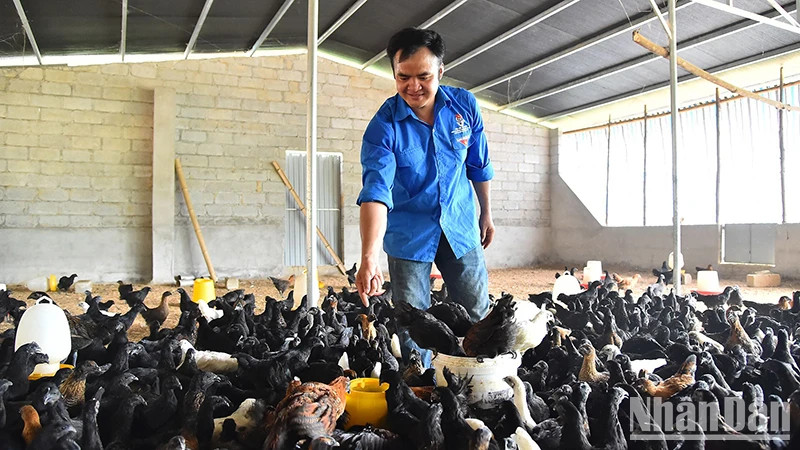Phan Quang Minh, Deputy Director of the Department of Animal Health, shared that the above positive results are attributed to the fact that the Department of Animal Health has proactively coordinated with relevant localities and units to effectively deploy disease prevention and control for livestock. In addition, the whole country currently has more than 2,200 livestock facilities and areas in 59 provinces and cities which are certified as disease-free, concentrated mainly in the Southeast region.
Besides the achievements, the construction of disease-free zones nationwide is also facing many challenges, including that the situation of small-scale livestock farming mixed with concentrated livestock facilities is still common. Infrastructure in livestock planning areas, encouraging livestock development, and concentrated slaughtering are lacking and not synchronised.
Livestock facilities have not met the requirements in management, control, and environmental treatment in animal husbandry. Some local authorities did not really care, have not directed the organisation to fully and effectively implement veterinary tasks according to regulations, and have not been strict in handling cases of violation of regulations on epidemic prevention and control.
The compliance with the provisions of veterinary law by some organisations and individuals is not high, and they do not strictly comply with biosafety farming measures and disease prevention measures with vaccines. Many livestock farms are still located outside the planning area, near residential areas. Vaccination for livestock farmers is facing difficulties. The vaccination rate for livestock in some places is still low.
To date, the country has more than 2,200 livestock facilities and areas in 59 provinces and cities that are certified as disease-free, mainly concentrated in the Southeast region.
The grassroots veterinary force is thin. Some livestock farmers still have limited awareness and subjective thoughts, and expect support from the State. The consumption market is mainly domestic, the export market is not large nor commensurate with the potential and advantages of transportation and geography. The majority of facilities for livestock raising, small slaughterhouses, and preliminary processing have not followed the technical procedures nor requirements of importing countries.
The process of developing high-tech livestock farming has not been linked to a comprehensive processing industry, and many closed production chains have not been formed to ensure disease safety and food safety according to the requirements of importing countries. strict requirements. A large-scale epidemic-free zone has not yet been built. On the other hand, the negative impacts of climate change and complicated weather developments have created conditions for disease-causing viruses to circulate widely...
According to experts, to overcome the above shortcomings, it is necessary to immediately implement a number of solutions, such as: provinces and cities promptly devising policies, strategies, and appropriate investments to build safe chains and regions; eliminating animal diseases for export; increasing the value of the livestock industry in the agricultural structure; arranging resources to effectively organise the national programmes and plans for animal disease prevention and control that have been approved and directed for implementation by the Prime Minister; and promoting the construction of disease-free facilities and zones.
It is also necessary to urgently review and organise vaccination and additional vaccination against epidemic diseases, ensuring at least more than 80% of the total herd, especially dangerous diseases such as: avian flu, African swine fever, mouth disease nail clipping, and skin inflammation with lumps on buffaloes and cows.
Attention should also be paid to strengthen the State's management role in connecting disease-free facilities together into a playground, complying with common regulations, forming more disease-free zones in a chain that meet Vietnamese standards as well as the requirements of the World Organisation for Animal Health.
Farmers should be offered guidance in relation to increasing the application of biosafety farming measures; cleaning and disinfecting with lime powder and chemicals in the cage area and surrounding high-risk areas; and taking measures to prevent disease vector species from entering the barn, spraying disinfectants and drugs to kill disease vector species.
Deputy Minister of Agriculture and Rural Development Phung Duc Tien said that to achieve better efficiency in the coming time and increase the export value of livestock products, the veterinary system and localities need to strengthen management strictly on drugs, vaccines, slaughtering activities, and disease prevention and control to create a “steel shield” for livestock with the spirit of firmly grasping reality and staying close to the area. Furthermore, the participation of many large enterprises will contribute to promoting the livestock industry.
















